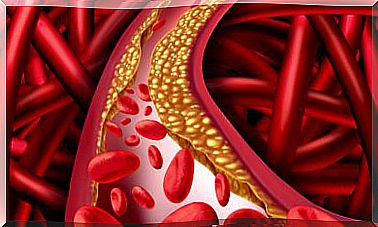Climacteric And Menopause: How To Adapt The Lifestyle?
Climacteric and menopause are concepts related to the loss of the reproductive capacity of women. Both lead to the appearance of different symptoms, as well as an increased risk of suffering from various diseases. That is why adapting the lifestyle to this new stage is essential to enjoy an adequate state of health.
Knowing and understanding this new stage, readjusting the eating pattern, increasing physical activity, applying sleep hygiene strategies and carrying out a correct supplementation pattern, are key to combating the symptoms and risks associated with climacteric and menopause.
What is the climacteric?
The climacteric refers to the physiological process by which women lose their reproductive capacity. It begins between the ages of 40 and 45 and culminates at the age of 65, after several years have passed after the cessation of menstruation.
This stage of the woman’s life is characterized by the progressive reduction of the production of estrogens and progesterone, the female hormones, as a consequence of ovarian aging.
What symptoms appear?

The climacteric is characterized mainly by the appearance of menstrual imbalances. In fact, they are the first symptom in all women and, therefore, they are the ones that warn that the climacteric has begun. From here on, each woman experiences a different symptomatology.
The variability of symptoms is determined by the drop in estrogen; When progesterone drops while estrogens are stable, symptoms other than menstrual misalignments do not appear.
However, when estrogens fall sharply, a more intense and varied symptomatic picture is evident. Symptoms associated with the drop in estrogen include:
- Weight gain.
- Insomnia.
- Night sweats.
- Irritability.
- Anxiety.
- Emotional lability.
- Dry skin and mucous membranes.
- Dyspareunia (vaginal pain during sexual intercourse).
- Decreased sexual desire
- Hot flushes.
And the menopause?
Menopause is not a process, but an event that ends a woman’s reproductive capacity. It is diagnosed retrospectively, when the woman has been 12 months without any type of vaginal bleeding. From here, the woman is said to be menopausal or postmenopausal.
Climacteric and menopause: what risks do they pose to health?
The drop in estrogen associated with climacteric and menopause increases the risk of certain health problems. These include:
- Osteoporosis.
- Overweight and obesity.
- Cancer.
- Cardiovascular diseases (stroke, high blood pressure, myocardial infarction, etc.).
- Metabolic pathologies (diabetes mellitus, thyroid disorders, etc.).
Thus, with the aim of minimizing symptoms and counteracting the greater associated risk, it is essential to readjust the lifestyle so that it adapts to new health needs.
Climacteric, menopause and lifestyle
Readjusting the lifestyle to face this new stage with health implies adapting the patterns of eating, physical activity, sleep and managing one’s own emotions.
Healthy nutrition
At this point, we must design a feeding strategy whose main objective is to deal with the drop in estrogen and associated bone demineralization (loss of calcium from bone). In addition, along with increased physical activity, a healthy diet will help maintain an optimal body composition.

Active life
Here, the main objective will be to stimulate the metabolism and counteract the tendency to accumulate body fat associated with the drop in estrogen. In addition, it will contribute to better stress and mood management.
Likewise, physical exercise will be essential to fix calcium within the bone to reduce the risk of osteoporosis and bone fracture.
In addition, if it is outdoors, it will also contribute to the intestinal absorption of this mineral, since vitamin D, whose synthesis is stimulated by exposure of the skin to the sun, is essential for this.
Sleep hygiene
Sleep disorders are usually the most pronounced and most discomforting symptom in pre- and postmenopausal women. In addition, science tells us that not sleeping well increases all the risks that, in turn, are already elevated by the drop in estrogen. Thus, the need to implement strategies to improve it is evident.
The solution is to establish certain changes related to the time to go to sleep and wake up, physical activity, dinner, habits before going to bed and the conditions of the room in which you sleep. In addition, it would be very interesting to start a supplementation regimen with melatonin, GABA precursors and vitamins of group B.
Omega 3
An adequate consumption of omega 3 contributes to reducing cardiovascular risk and improving the cognitive and emotional symptoms associated with this stage.
This fatty acid is found mainly in fish and in some nuts and seeds. However, its availability is scarce in all of them.
Fish are usually cooked before being eaten and omega 3 oxidizes when it comes into contact with heat. For their part, nuts and seeds contain a type of omega 3 that cannot be assimilated by our body.
That is why supplementation is essential. A suitable omega 3 supplement is one that is presented in the form of triglyceride, has not been subjected to high temperatures and contains the minimum amount of mercury possible.

Understand the process
Explaining the process and the ways to alleviate it is essential to reduce the anxiety that these women experience as a result of ignorance and misunderstanding of what is happening.
In addition, it is essential to work so that women do not see this period as a loss of health but as an opportunity to take care of it and improve it. Here, it is essential to demonstrate that the proposed changes improve the symptoms and reduce the associated risks.









